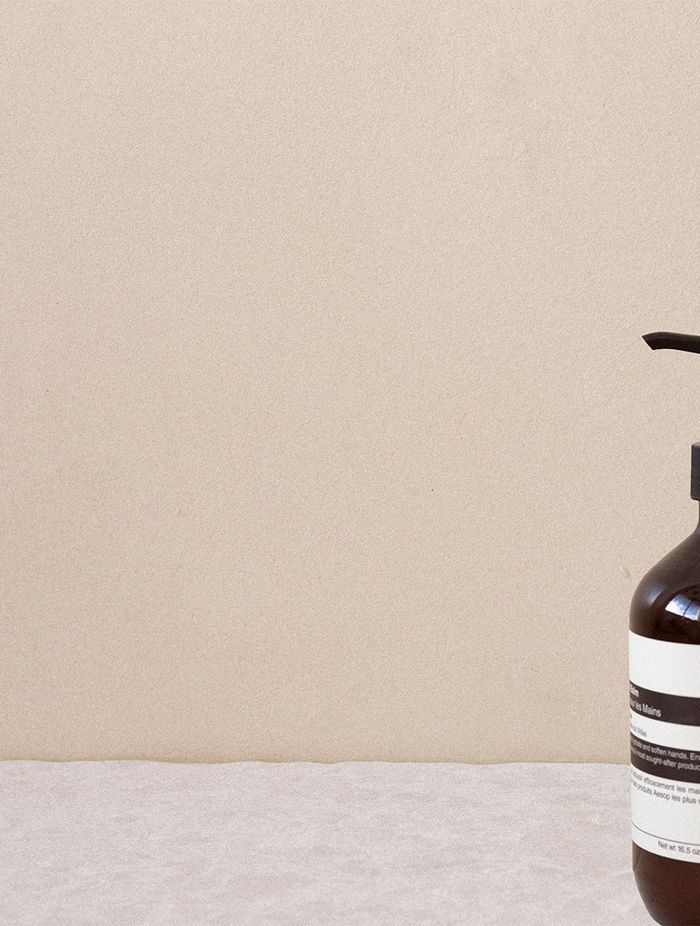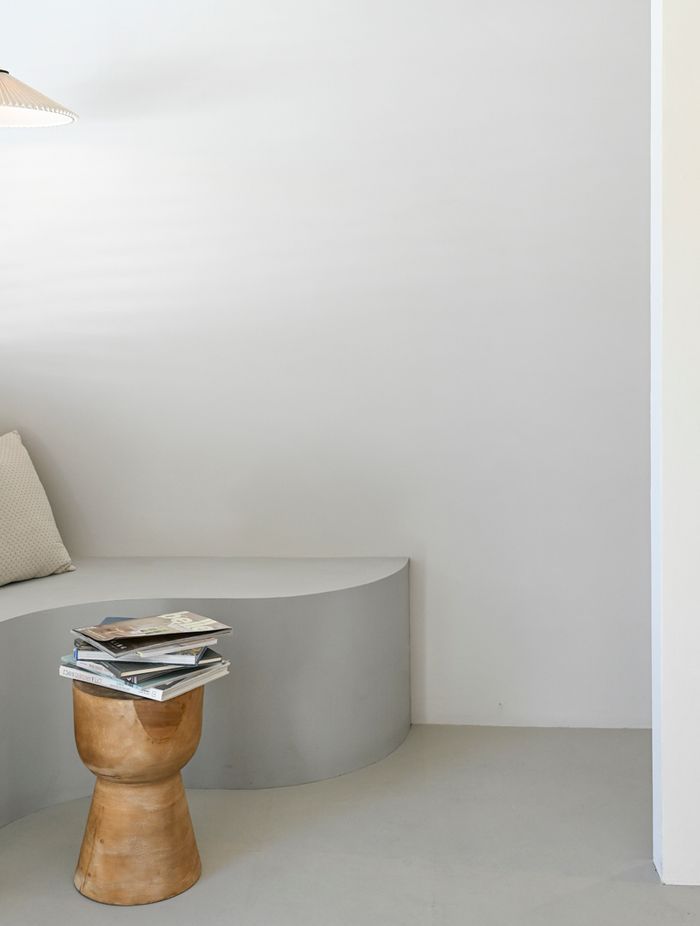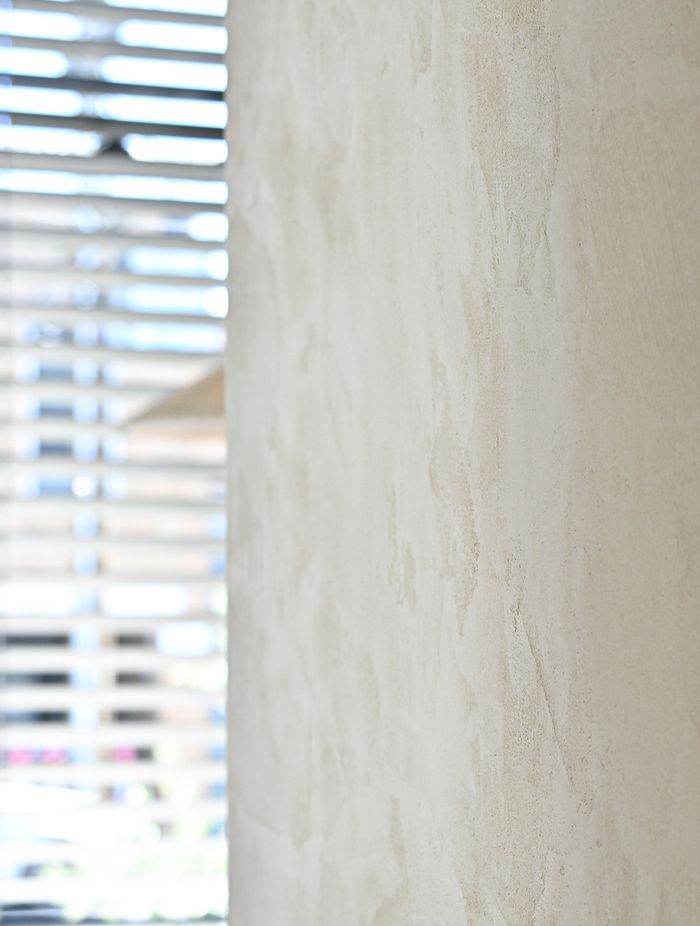Venetian plaster vs. microcement: Decoding the differences for your dream design
Written by
25 May 2025
•
6 min read

If you’re looking for a finish with character, elegance and a bit of uniqueness, two excellent options that will emerge from the crowd are venetian plaster and microcement. The refined traits they share, which are numerous, often makes it difficult for people to understand the differences between them, but they do exist and do influence how they are used.
To unravel this further, we spoke with Louis Katavolos, founder of Cimento Studio, a leading supplier of premium textured finishes from around the world.
The fundamental difference at their core
Before getting into the practical and aesthetic qualities of these two finishes, it’s important to understand the compositional differences at their core.
Venetian plaster is a decorative wall finish, derived from a composite of lime and other natural materials like granite and fine granular marble, that can be applied to create a smooth surface, often mimicking the look of polished marble.
Microcement is a newer product, made from a combination of polymers, glues and cement, applied in a thin layer to achieve varying levels of texture, resulting in a seamless and durable surface.
As Louis Katavolos explains, while there is some crossover between them, their material differences mean they are often used in varying ways.
“Venetian plaster is a natural product that can shine up and add character, but it's not really used for anything other than decorative walls. Microcement is a newer type of coating that is more durable and can be used on floors, benchtops, splashbacks, etc, but it does need sealing. The applications cross over a little bit, but microcement has more functional uses.”

Nature versus nurture
As just discussed, the material difference between what is fundamentally a natural product versus an artificially “nurtured” product leads to different applications at times. However, Louis describes how these qualities can influence people’s decisions in other ways, too.
“Venetian plaster doesn’t have any additives in terms of glues and polymers like microcement, so if someone is looking to do a project with an eco focus, then venetian plaster is probably the one to focus on, offering that health and cleanliness.”
That being said, Louis goes on to elaborate that the formulations of microcement are improving all the time.
“Microcements are getting a lot better in terms of the VOCs (Volatile Organic Compounds), and our products come out of Europe, where the standards are very high, and some have certifications that are VOC-free.”

The visual and tactile qualities
The differences between venetian plaster and microcement aren’t purely functional by any stretch of the imagination. Their visual and tactile qualities can be a significant point of differentiation too.
On the latter, venetian plaster can be shined to have a lustrous and smooth feel compared to microcement, which tends to have a cement-like feeling due to its composite mix.
When it comes to aesthetics, Louis explains that there are microcement options that can quite closely mimic the look of venetian plaster, but there are still some traits that separate the two.
“There are microcements that can create a very close look, but ultimately, venetian plaster is unique. For example, there's a very fine venetian plaster which can be shined up to almost be a mirror finish, which you can’t do with microcement.”
While microcement doesn’t have the same level of sheen, Louis says that in the context of contemporary styling, its more muted appearance is sometimes preferred for modern environments.
“It offers a very clean and seamless look and a nice, consistent finish that does lend itself to more modern type builds. Most people who use microcement often are looking for that uniform look, almost like a painted finish, but with that texture and movement of a trowel, so it has a little bit more character.”

Ease of use and maintenance
There are a few other factors beyond these aspects that are also worth considering — ease of use and ongoing maintenance being two of them. If you’re using an experienced professional, then the application isn’t so much of an issue, and Louis says skilled tradespeople can achieve all kinds of finishes.
“The technique and the working of the trowel is something that more knowledgeable applicators will be more skilled at, and be able to get different types of finishes, which is really endless. But in saying that, someone who hasn't had a lot of experience can get a finish that's definitely acceptable without a lot of knowledge.”
He goes on to say there are plenty of products that are made to be easy to use, making them great for DIYers.
“We have some pre-mixed products that come in a paste form out of the bucket that you can use straight away, and are very easy to use.”
The difference between venetian plaster and microcement with respect to their application and maintenance boils down to their intended use. As Louis explains, microcement can be used for flooring and wet areas, which naturally requires more preparation and care as a result.
“With microcement, there can be a little bit more preparation involved, especially with bathrooms, floors and benchtops, where they're going to have wet areas and get high traffic and impact, and you do need a sealer. That means you will need to reseal it at some point, roughly every five years, but it’s not a huge job.”

Emerging trends and an exciting new option
With our final questions, we asked Louis about any emerging trends when it comes to these products, and he spoke of the growing popularity of both options, especially with architects and designers in the field.
“What we're finding is that a lot of architects now are that once they start dabbling with venetian plaster and microcements, they really like them, and they stick with them. They may start using it as a feature, then they start using it in hallways, and then it ends up throughout the kitchen. They’re unique and almost like a fingerprint in the home, which is nice.”
Louis also speaks passionately about a third emerging finish, mineral paint, which has its own unique qualities and traits to give architects, designers and homeowners even greater options in design.
“We now have mineral paint, which is effectively a lime-based paint that can be applied with a brush. It’s a really easy product to use for DIYers and is a bit tailored as well, adding character and texture to a space. We’re finding it's getting used in a range of different projects, not just high-end builds but small builds and renovations, and people are seeing real value in it.”